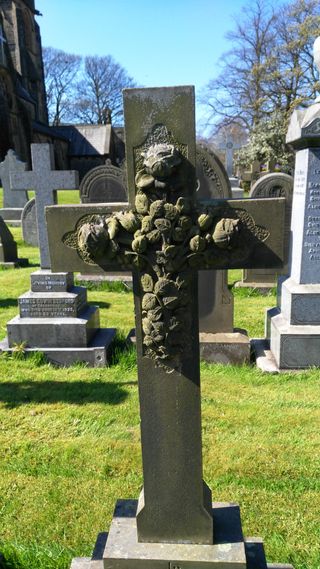FUNERALS

Funerals
Typically, when a loved one dies our first contact is from a funeral director. The funeral director will liaise with the Vicar on dates and times. Whoever will be taking the funeral will then contact the family and arrange to visit. That is likely to be the Vicar or one of our Readers.
During that visit, we will talk about the service: the hymns, bible reading, any other readings, who might like to speak or read and who will prepare something to describe the person for whom we’re holding the service. There are some things that will always form part of a Church of England funeral, but we do our best to accommodate the family’s wishes, within the time constraints of the type of funeral chosen. If it’s to be at the crematorium, then we are much more bound by issues of time, whereas at one of our churches there is more time, as we would never book something else into the church immediately after a funeral.
Burials in our Churchyards
If the service is to be followed by a burial in our churchyard, the funeral director will make the arrangements to have the grave prepared. If the burial is to be into an existing grave, s/he will need to know the details of the person already buried, so that the correct grave can be identified. If it’s a new plot, and has not been reserved, then the Church Wardens will have the final say on exactly where that plot will be.
Interments of Ashes
If you choose a cremation for your loved one, you may decide to have the ashes interred in one of our churchyards. We can do this, into an existing grave, perhaps with a family member, or else into a new plot. You can arrange this through a funeral director, or directly with the Vicar. We will find a mutually convenient date and time and arrange for the plot to be prepared. An interment of ashes takes only 5 or 10 minutes, and involves a very simple act of committal at the site of the burial.
Memorials
Many people want to mark the spot where loved ones are buried, and most burials have a headstone. There are rules about what is allowed: the style, type and size of the stone; the colour and style of the inscription; as well as the wording used. The stone masons have copies of those rules, and will advise you as you complete the forms to apply for a memorial stone to be erected. The forms will need to be approved and counter signed here in the parish before you can place the headstone.
More Information
More information can be found here on the church of England website.
Typically, when a loved one dies our first contact is from a funeral director. The funeral director will liaise with the Vicar on dates and times. Whoever will be taking the funeral will then contact the family and arrange to visit. That is likely to be the Vicar or one of our Readers.
During that visit, we will talk about the service: the hymns, bible reading, any other readings, who might like to speak or read and who will prepare something to describe the person for whom we’re holding the service. There are some things that will always form part of a Church of England funeral, but we do our best to accommodate the family’s wishes, within the time constraints of the type of funeral chosen. If it’s to be at the crematorium, then we are much more bound by issues of time, whereas at one of our churches there is more time, as we would never book something else into the church immediately after a funeral.
Burials in our Churchyards
If the service is to be followed by a burial in our churchyard, the funeral director will make the arrangements to have the grave prepared. If the burial is to be into an existing grave, s/he will need to know the details of the person already buried, so that the correct grave can be identified. If it’s a new plot, and has not been reserved, then the Church Wardens will have the final say on exactly where that plot will be.
Interments of Ashes
If you choose a cremation for your loved one, you may decide to have the ashes interred in one of our churchyards. We can do this, into an existing grave, perhaps with a family member, or else into a new plot. You can arrange this through a funeral director, or directly with the Vicar. We will find a mutually convenient date and time and arrange for the plot to be prepared. An interment of ashes takes only 5 or 10 minutes, and involves a very simple act of committal at the site of the burial.
Memorials
Many people want to mark the spot where loved ones are buried, and most burials have a headstone. There are rules about what is allowed: the style, type and size of the stone; the colour and style of the inscription; as well as the wording used. The stone masons have copies of those rules, and will advise you as you complete the forms to apply for a memorial stone to be erected. The forms will need to be approved and counter signed here in the parish before you can place the headstone.
More Information
More information can be found here on the church of England website.
